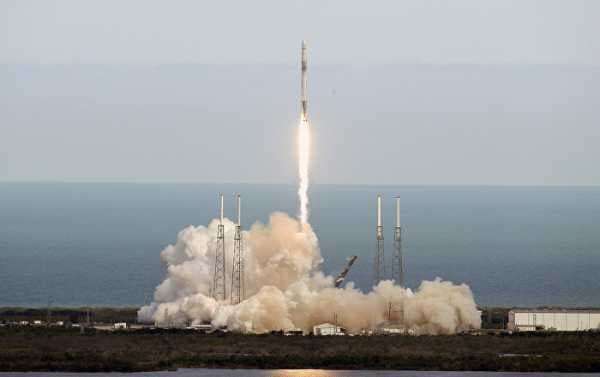
314-kilogram heavy Observatory launched to the International space station from the Kennedy space center is the culmination of nearly 20 years of Danish research groups, which cost about $ 50 million. The project is expected to shed light on climate change and to bring Denmark on the first place in space exploration.
In the first Space Observatory successfully launched into space and is now heading to the International space station (ISS). Although this is an international project of the European space Agency, the mission is under the leadership of the Danish National space Institute (DTU space), Danish Radio reported.
After the successful launch of the first Space Observatory will begin its scientific quest to photograph and collect more data on violent storms, which appear up to 100 kilometers above the earth and rare light phenomena sometimes called the “red fairies”, “blue jets” and “elves”, including the measurement of their radiation. According Terma Deputy Director Carsten Jorgensen is the phenomenon of light cannot be explained neither mathematically nor physically present. However, there are serious grounds to believe that it has an impact on climate change.
In the first Space Observatory was launched by the unmanned Falcon 9 rocket from the Kennedy space center, Florida, in cooperation with the company “spacex”. For Denmark part 314-kilogram heavy Observatory is the culmination of two decades of work by Danish researchers. The scientific basis of the project was laid DTU space, while the Danish company Terma led the technical part. The total cost of the project amounted to more than 300 million Danish kroner ($50 million). Other major partners are the University of Valencia in Spain, and the University of Bergen in Norway.
“Top module called Dragon will be launched into space and docking with the ISS. When this happens on Friday the 13th of April, our equipment, Asim, will be taken from the module the Dragon and on the space station. And our mission begins,” Karsten Jorgensen told Danish Radio.
With in the side no clouds, there is hope to obtain important knowledge about the mechanisms behind natural phenomena and their consequences, DTU space research Director, Torsten Neubart, who came up with this idea about two years ago, said.
“Imagine a textbook on anatomy, where you have a picture of a naked man, which You can open and view in a light chain of blood. This is how we can also watch on lightning phenomena and see how they look inside. That is, our tools are more likely to” Neubart explained to Danish Radio.
In the first space Observatory is seen as a continuation of the Oersted satellite, which was launched about 20 years ago and previously had the distinction of being Denmark’s largest and most expensive space missions.
“We in Denmark are not the first to make first-class tools to look at these things, so we expect that he will help us us get to the Superleague” Board neubert’explained.
Sourse: sputniknews.com






